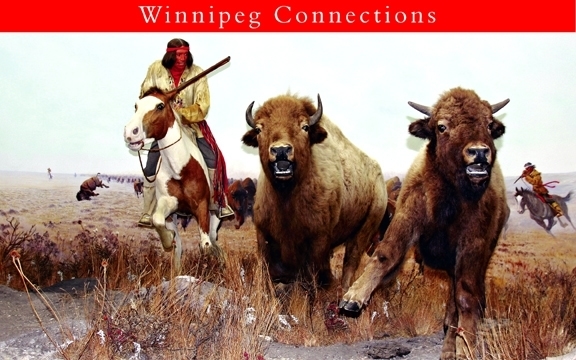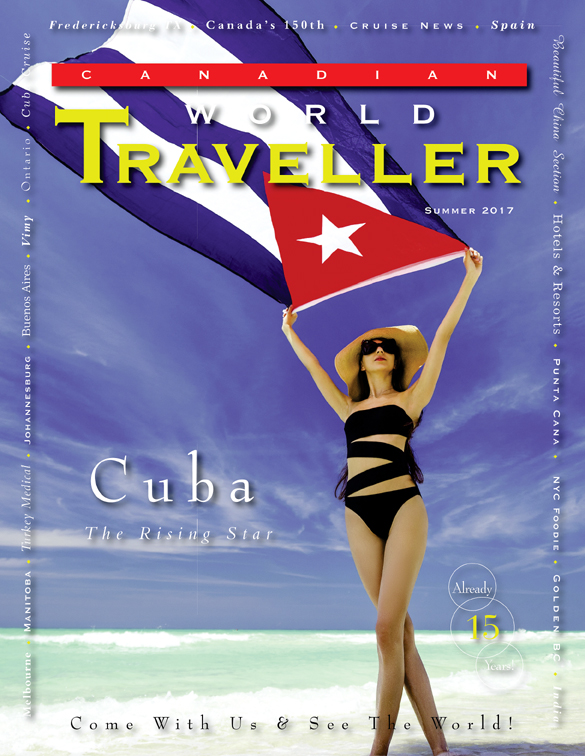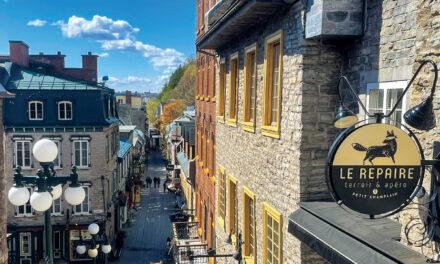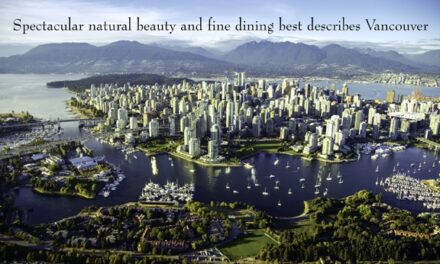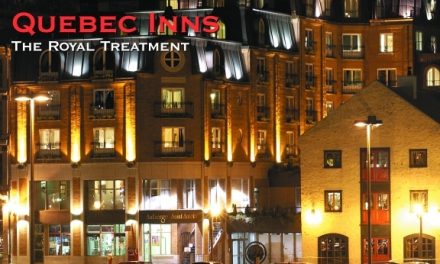Canada
Winnipeg Connections
Article and photography by Steve Gillick

Travellers seeking that important connection with the destination they visit, need search no further. Winnipeg, Manitoba has been at the forefront of ‘connections’ for 6000 years.
The Forks, where the Red and Assiniboine Rivers meet, is a great place to start, with Parks Canada tours that provide a quick and easy history (‘6000 years in 60 Minutes’) while walking the land and explaining the buildings, monuments and plaques that tell the story of the city.
The Oodena Celebration Circle is front and centre at the Forks. The Ojibway word meaning ‘the heart of the community’ honours the connection between the sky and the earth, that includes lenses through which visitors can peer at night to view the mythological constellations that support the creation beliefs of Indigenous people around the world.
And with the message that every metre of earth at the Forks represents 1000 years of history, our guide spoke about the Indigenous groups who called the Forks their meeting place, the arrival of the Hudson’s Bay Company’s fur traders in the 17th century, the Selkirk Settlers in the 18th Century, the role of the Métis in building the land, the success of Louis Riel in defending the rights of the Métis in the 19th Century, and ultimately the creation of the Province of Manitoba in 1870. And each one of the guides, curators and museum directors we met throughout our visit spoke about the vital connections between the people and the land.
The directions to walk from the Forks to the Saint Boniface Museum are easy. Take the Esplanade Riel on the Provencher Bridge, past “Mon Ami Riel’ (My friend Riel), the only restaurant-on-a-bridge in North America, to the giant bust of Louis Riel down the street. This is where the Museum Director, Vania Gagnon told us about Jean-Baptist Lagimodière, a fur trader, and his wife Marie-Anne Gabouray, who was the first European woman to marry a French Canadian and settle in Red River (Winnipeg) in 1812. One of the couple’s children married a man by the name of Louis Riel, who had a son, named Louis Riel, who became the founder of Manitoba. And Vania Gagnon knows, as her maiden name is Lagimodière and she is Louis Riel’s first cousin, five times removed.
Darlene Wight at the WAG, the Winnipeg Art Gallery, has an envious job. As the Curator of Inuit Art, she not only travels to various communities in northern Manitoba, Ontario and Nunavut, but she brings back Aboriginal myths conveyed through beautifully carved sculptures, prints, drawings, textiles, dolls and clothing. In fact the WAG has the largest collection of Inuit Art in the world. A small portion is on display in various museum galleries while the others (13,000 pieces in total) rest in a closed vault (that I was allowed to visit), waiting for the new Inuit Art Centre to open in 2019.
And for those looking for a more modest collection of Indigenous art, Neechi Commons is the place to go. Louise Champagne, the President of the Co-op explained that Neechi is a Cree word that implies ‘relationships’ and community connections. The Commons includes the Neechi Niche consignment store (that began as a way for locals to barter home-made crafts, such as moccasins, for groceries), Kookum’s (Grandmother’s) Bakery that specializes in Bannock (the traditional Indigenous Canadian bread), a grocery store, and an entire wall featuring the works of local artists, which also serves as a touch of colour, charm and visual conversation for the diners in the Bison Berry Restaurant. This is where I had my Bonnie Burger, consisting of a Bison patty with spinach, goat cheese, mozzarella and sautéed onions, on a Bannock Bun. It was so good and filling that I couldn’t finish my delicious dessert of Wild Rice Pudding!
For an exciting experience of a different kind, Winnipeg’s Exchange District is a National Historic Site containing the largest collection of Heritage buildings on the continent. Festivals, shops, art galleries, theatres and restaurants are the hallmark of the area. One of my favourite places for lunch or dinner is the Peasant Cookery. Aside from their excellent cocktails and wine list, the food is simply amazing (try the King Salmon).
In the days of the Fur Traders however, the main food was Buffalo meat in the form of Pemmican, a powder-like, high protein, easy to carry, nutriment. Today, visitors can learn about Buffalo first hand at Fort Whyte Alive, just south of the city. On the Bison Safari, visitors get up-close-and-personal with 30 or so adult Bison and new-born calves that are grazing, nursing, sleeping and wallowing in the dirt.
And with Buffalo in mind, we visited the Manitoba Museum where a life-size diorama of a Métis Buffalo hunt near the entrance ensures that visitors appreciate the contribution of the Métis and the importance of the buffalo to the history of the province. The Museum collection includes some 26,000 artifacts from the Hudson’s Bay Company, along with exhibits that showcase the Inuit as well as First Nations such as the Dene, Algonquin, Cree,and Ojibway.
In an effort to dispel the believe that Canadian tourism consists of “Mounties, Mountains and Moose”, the Oak Hammock Marsh, about 40 minutes north of Winnipeg, offers a fascinating adventure into wetlands, wildlife and wonderment.
This is where I learned that my wing span (actually my stretched-out arms) was the same as a Great Grey Owl, which coincidentally is the Provincial Bird of Manitoba. On the boardwalk through the marsh, we feasted on the cucumber/watermelon taste of cattail stems, as well as the sights and sounds of Redhead Ducks, Green-winged Teals, Red-winged Blackbirds, American White Pelicans and Tree Swallows. While the muskrats and beavers seemed to be sleeping in their dens, a colony of Richardson’s Ground Squirrels was actively scampering in and out of their burrows.
One of the highlights of my visit was the ‘Bird in the Hand Experience’ that involves banding birds. After their capture in special nets, each bird has it’s leg fitted with an identification band, their wing length measured and their belly fat checked to see if they are about to migrate or have just completed part of the migratory route that stretches from the Yukon to the Gulf of Mexico. The birds are then weighed and released. I was thrilled to personally hold and release two tiny Yellow-rumped Warblers.
But without doubt, one of Winnipeg’s main attractions is the Canadian Museum for Human Rights. The stunning design by Antoine Predock fulfilled the architect’s three goals: to showcase Canada, to welcome the people of the world into the building, and to have the design incorporate the perspective of the Indigenous people. Connecting the earth to the sky, the building design features four roots representing Mother Earth, prairie grasses, a cloud that mimics the wings of a dove (and represents peace), all rising to the Tower of Hope.
Throughout the Museum galleries, the theme that “All human beings are born free and equal in dignity and rights” is presented with a reassuring sub-theme of “moving from darkness to light”. For visitors who take the Indigenous Mikinak-Keya Spirit Tour, they will learn about the Seven Sacred Animals and their teachings that are found throughout the building: The Buffalo (Respect), Eagle (Love), Bear (Courage), Sabe (Honesty), Beaver (Wisdom), Wolf (Humility) and Turtle (Truth). This is a Museum experience like none other.
And when you experience Winnipeg you quickly come to realize that this is a city like no other. Winnipeg is a vibrant, exciting city that responds to the needs and special interests of visitors and provides opportunities at every step for physical, visual and spiritual connections with the land of the people.
www.travelmanitoba.com
Click on cover to view published article

